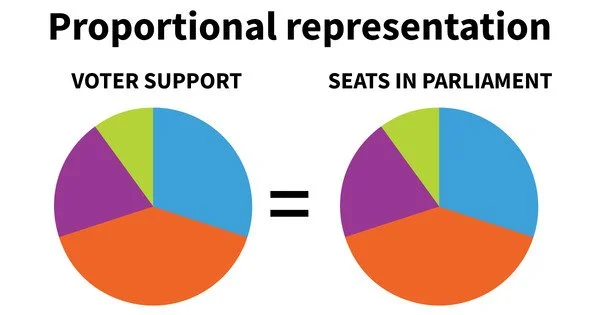Proportional representation (PR) is a type of electoral system in which subgroups of an electorate are represented in the elected body in a proportionate manner. The concept primarily applies to voter political divisions (political parties). Unlike other voting systems, such as winner-take-all or first-past-the-post, PR seeks to ensure that the proportion of seats won by a political party in an election is proportional to the percentage of votes received.
In a proportional representation system, voters typically vote for a political party rather than individual candidates. The number of seats a party receives in the legislative body is then determined by its overall vote share. This means that smaller parties have a better chance of being represented because they can still win seats even if they do not receive a majority of votes in any particular constituency.
There are several methods for implementing proportional representation, each with its own set of rules and mechanisms. Party-list proportional representation, in which parties present a list of candidates and voters choose a party, and single transferable vote, in which voters rank candidates in order of preference, are two common forms of PR.
The essence of such systems is that all – or nearly all – votes cast contribute to the outcome and are effectively used to help elect someone – not just a bare plurality or (exclusively) the majority – and that the system produces mixed, balanced representation reflecting how votes are cast. In the context of voting systems, PR means that each assembly representative is elected by a roughly equal number of voters. Seats are allocated in proportion to the vote share received by each party in the common case of electoral systems that only allow a choice of parties.
Advantages
There are several advantages to using proportional representation. It produces a more accurate representation of voters’ preferences in the composition of the legislative body. It enables greater diversity and representation of various political viewpoints, including those of smaller political parties or minority groups. Because parties frequently need to form alliances to secure a majority in the legislature, PR systems encourage cooperation and coalition-building among them.
However, proportional representation is not without its detractors. Some argue that public relations can result in a fragmented political landscape with numerous parties and potentially unstable coalition governments. Others argue that it weakens the direct connection between constituents and their elected representatives because voters do not have as much influence over specific individuals as they would in a constituency-based system.
















